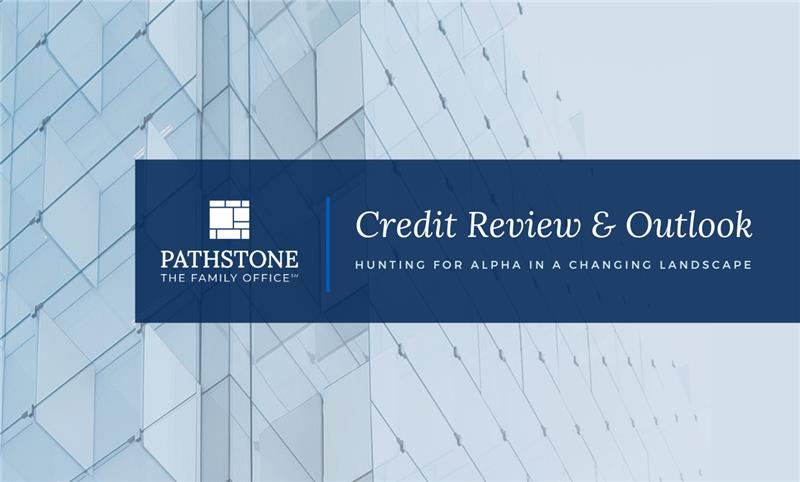The Macro Picture
Equity markets, led by the U.S. Large Cap tech mega caps, are off to a solid start in 2024. Artificial intelligence (AI) related companies have seemingly evaded the gravitational force of tight monetary policy as competition for the next great breakthrough, combined with balance sheets flush with cash, has triggered a tremendous capital expenditure cycle. European markets have fared well, reflecting low valuations and a steady influx of tourists, particularly in Southern Europe, bolstering the economy. China has been an anchor to Emerging Market equity performance so far this year, while the Indian market has blossomed. We expect equity markets may gain support from a broader set of companies as central banks around the world have begun cutting interest rates, creating some relief for the non-AI economy.
United States. Amid evidence that tight monetary policy in the U.S. has had an impact in slowing the economy and therefore bringing inflation down from its highs, there remains great optimism in a soft-landing scenario rather than recession. Perhaps that is enough to justify heightened expectations for earnings growth in the year to come. However, we are cognizant of government balance sheets, which have been stretched in recent years, and consumers who may be revolting against higher prices. In other words, we see interest rate cuts as offering an extension of the current economic cycle- but we hesitate to call it the beginning of a new cycle.
In addition to the benefits to companies from lower interest rates and declining wage pressures, capital expenditure focused on the necessary infrastructure to support AI may be the primary fuel for continued strength in the U.S. economy. Lower interest rates may also provide a meaningful boost to new home construction and help revitalize existing home sales.
The risks ahead are not insignificant. They include geopolitical tensions, the possible resurgence of inflation, and the question of whether earnings expectations may be too high. President Biden’s withdrawal from the presidential race highlights how difficult predicting geopolitical events can be, and with 3.5 months left before the election there is plenty of time for more surprises. While we are mindful of the potential for short-term volatility associated with these risks, we anchor our positioning to our fundamental tools. Pathstone’s Market Cycle Dashboard score has weakened in recent months but remains positive, suggesting that the risk of recession is not above normal.
Europe and Asia. It feels like one of two things would need to happen for Europe to experience a strong rebound in its economy. Either the government(s) would have to direct spending, as they have to the green economy, or they would need to loosen regulation to allow for and incentivize private capital to take more risks in developing new engines for economic growth. In the absence of such changes, you have a strong service sector supported by tourism, particularly in the South, but a flagging manufacturing sector in the primary industrialized countries of France and Germany. Europe, as an exporter, has the advantage of a relatively inexpensive currency, but they are competing more and more against Chinese and other lower-cost manufacturing economies.
Asia has suffered in recent years on the back of missteps by the Chinese government and by the impact of weaker and more contentious relations with the West. Geopolitical strains have led to greater tariffs on Chinese goods and the domestic economy has been characterized by greater savings levels among consumers, which has weighed on the economy. While these issues have not been entirely cleared up, China and its neighbors seem to be rebounding from their lows. Additionally, as we consider the Emerging Markets more broadly, the make-up of the index has become less China-centric, with growing exposure to Taiwan, Korea, and India.
Fixed Income. For several years we have discussed the normalization of interest rates. Today we still have an inverted yield curve but expect that perhaps the only portion that is still “abnormal” is really the short end, which is controlled by the central bank. The intermediate and longer end of the yield curve appear much closer to normal. It will be a welcome addition to expect fixed income to contribute to portfolio returns in the years ahead after suffering for some time under a low interest rate environment followed by a rising rate environment that led fixed income to have negative total returns in several years. Longer term, the focus will be on government balance sheets and their ability to manage the fiscal situation. The risks we will monitor most closely include the risk of inflation re-igniting and/or growing fiscal strains that might push interest rates higher.
The Micro (Bottom-up) Picture
Within core fixed income, we are recommending shifting the long-duration fixed income exposure back to intermediate. Our analysis shows that in most possible outcomes going forward, intermediate duration will offer superior returns compared to long duration. We want to highlight that there are currently differences in the shapes of the taxable and tax-exempt yield curves, but scenario analysis for both confirms the relative attractiveness of making this shift.
We continue to recommend a bias towards value stocks in U.S. Large Cap and Developed Non-U.S. equities. The concentration of growth names within the S&P 500 Index has intensified with this year’s rally in AI-oriented names. We find that heightened valuations and this greater concentration continue to pose significant risks and therefore lean into value equities with more reasonable valuations and an anticipated tailwind from falling interest rates.
Please contact your client advisor for the full Tactical Allocation Viewpoints report, which includes detail on Pathstone’s current recommended allocations by asset class and sub-class.
Disclosure
This communication and its content are for informational and educational purposes only and should not be used as the basis for any investment decision. The information contained herein is based on publicly available sources believed to be reliable but is not a representation, expressed or implied, as to its accuracy, completeness or correctness. No information available through this communication is intended or should be construed as any advice, recommendation or endorsement from us as to any legal, tax, investment or other matters, nor shall be considered a solicitation or offer to buy or sell any security, future, option or other financial instrument or to offer or provide any investment advice or service to any person in any jurisdiction. Nothing contained in this communication constitutes investment advice or offers any opinion with respect to the suitability of any security, and this communication has no regard to the specific investment objectives, financial situation and particular needs of any specific recipient. Past performance is no guarantee of future results.
Additional information and disclosure on Pathstone is available via our Form ADV, Part 2A, which is available upon request or at www.adviserinfo.sec.gov.
Any tax advice contained herein, including attachments, is not intended or written to be used, and cannot be used, by a taxpayer for the purpose of (i) avoiding tax penalties that may be imposed on the taxpayer or (ii) promoting, marketing or recommending to another party any transaction or matter addressed herein.




















